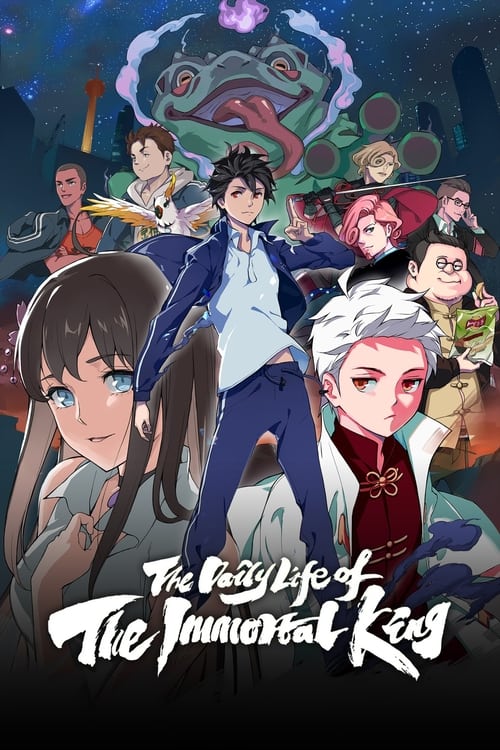
Ask Your Own Question
What is the plot?
In the opening scene of "Dos por uno," we are introduced to the main characters, two friends, who are struggling with their mundane lives. They work at a small, unremarkable office and are dissatisfied with their jobs. The first character, a dreamer named Leo, often fantasizes about a more exciting life, while his pragmatic friend, Max, tries to keep him grounded. Their contrasting personalities set the stage for the unfolding events.
One day, Leo stumbles upon a mysterious briefcase left behind in a café. Curiosity piqued, he opens it to find a large sum of money and a note that hints at a dangerous deal gone wrong. Excited by the prospect of a quick fortune, Leo convinces Max to help him figure out what to do with the money. Max is hesitant, fearing the consequences, but Leo's enthusiasm sways him.
As they delve deeper into the mystery of the briefcase, they discover that it belongs to a notorious criminal organization. This revelation heightens the stakes, and they realize they are now in over their heads. They decide to return the money, hoping to avoid any trouble. However, their plan goes awry when they are ambushed by the criminals, who demand the return of their money and threaten their lives.
In a tense confrontation, Leo and Max manage to escape, but not without a few close calls. They find refuge in an abandoned warehouse, where they begin to devise a plan to outsmart the criminals. Leo's impulsive nature leads him to suggest a counter-heist, believing they can turn the tables and keep the money for themselves. Max is skeptical but ultimately agrees, seeing no other way out.
The duo begins to gather information about the criminal organization, using their limited resources and connections. They learn about a major deal that the criminals are planning, which involves a shipment of illegal goods. Leo sees this as their opportunity to strike. They prepare meticulously, creating disguises and gathering tools to aid in their heist.
On the night of the deal, Leo and Max infiltrate the location where the criminals are meeting. The atmosphere is tense, filled with the sounds of hushed conversations and the clinking of glasses. As they blend in, they overhear crucial details about the criminals' operations. However, their cover is blown when one of the criminals recognizes Leo from the café incident.
A chaotic fight ensues, with Leo and Max using their wits and makeshift weapons to fend off the attackers. The scene is filled with adrenaline as they dodge punches and throw improvised projectiles. They manage to escape the initial confrontation but are pursued through the darkened streets.
In a desperate bid for safety, they split up, with Leo leading the criminals away while Max seeks help from the police. Leo's heart races as he navigates through alleyways, using his knowledge of the city to evade capture. Meanwhile, Max, feeling guilty for leaving Leo behind, struggles with the decision to call for backup.
After a series of close encounters, Leo finds himself cornered in a dead-end alley. Just as the criminals close in, Max arrives with the police, who swoop in to apprehend the criminals. The scene is chaotic, with sirens blaring and lights flashing as the criminals are taken into custody.
In the aftermath, Leo and Max reflect on their harrowing experience. They realize that their friendship has been tested but ultimately strengthened through the ordeal. They decide to use the money from the briefcase to start a new venture together, one that aligns with their dreams and aspirations, leaving their mundane lives behind.
The series concludes with a sense of hope and new beginnings, as Leo and Max embark on their next adventure, ready to face whatever challenges come their way.
What is the ending?
In the ending of "Dos por uno," the main characters face the consequences of their actions throughout the series. The story culminates in a dramatic confrontation that tests their relationships and personal growth. Ultimately, they must decide whether to continue their lives as they are or to embrace change and seek redemption.
As the final episode unfolds, we find ourselves in a tense atmosphere. The main characters, who have been through numerous trials and tribulations, gather in a familiar setting--their shared apartment. The air is thick with unspoken words and unresolved conflicts. Each character is visibly affected by the weight of their choices, and the emotional stakes are at an all-time high.
Scene 1: The Gathering The camera pans across the room, capturing the expressions of the characters. There's a sense of unease as they sit in silence, reflecting on their past. The protagonist, who has been the driving force of the group, breaks the silence. His voice trembles slightly, revealing his vulnerability. He expresses regret for the decisions that have led them to this moment, and his honesty prompts others to share their feelings.
Scene 2: Confrontation As emotions rise, a confrontation erupts between two of the main characters. They argue passionately, their voices echoing off the walls. Each accusation is laced with years of frustration and hurt. The tension is palpable, and the audience can feel the weight of their shared history. This scene serves as a cathartic release, allowing the characters to confront their demons.
Scene 3: Reflection and Resolution After the confrontation, the group takes a moment to reflect. They begin to share their dreams and aspirations, revealing a deeper understanding of one another. The protagonist suggests that they all need to make changes in their lives, not just for themselves but for each other. This moment of vulnerability leads to a collective decision to support one another in their journeys toward personal growth.
Scene 4: The Farewell In the final moments, the characters prepare to part ways, each embarking on their own path. The protagonist stands at the door, looking back at his friends with a mixture of sadness and hope. They exchange heartfelt goodbyes, promising to stay in touch and support one another from afar. The camera lingers on their faces, capturing the bittersweet nature of their farewell.
Scene 5: New Beginnings The series concludes with a montage of each character pursuing their new paths. One character is seen enrolling in a new school, another is starting a new job, and the protagonist is shown reflecting on his journey, finally at peace with his choices. The final shot is of the group's apartment, now empty but filled with memories, symbolizing the end of one chapter and the beginning of another.
In the end, each character finds a sense of closure and a renewed sense of purpose. They have faced their conflicts head-on and emerged stronger, ready to embrace the future. The series leaves viewers with a sense of hope, emphasizing the importance of friendship, growth, and the courage to change.
Is there a post-credit scene?
"Dos por uno," the 2013 television show, does not feature a post-credit scene. The series concludes its episodes without any additional scenes after the credits roll. Each episode wraps up its storyline, focusing on the comedic and dramatic elements of the characters' lives, leaving no lingering cliffhangers or additional content in the post-credit sequence. The show maintains a straightforward narrative structure, emphasizing the humor and dynamics between the main characters throughout its run.
How does the relationship between the characters evolve throughout the series?
Throughout the series, the relationship between the two leads evolves significantly. Initially, they are depicted as carefree and somewhat reckless, but as they encounter various challenges, their bond deepens. They learn to rely on each other more, facing personal struggles that test their friendship. Key moments include heartfelt conversations that reveal their vulnerabilities, leading to a stronger, more supportive partnership.
What are the main character dynamics between the two leads in Dos por uno?
The main character dynamics in Dos por uno revolve around the contrasting personalities of the two leads, who are best friends yet polar opposites. One character is ambitious and driven, often pushing the other to step out of his comfort zone, while the other is more laid-back and skeptical of their schemes. This tension creates both comedic and heartfelt moments as they navigate their friendship and the challenges they face together.
What specific challenges do the characters face in their personal lives?
The characters face a variety of personal challenges, including career setbacks, romantic entanglements, and family issues. One character struggles with job insecurity, leading to feelings of inadequacy, while the other deals with a complicated romantic relationship that causes tension between them. These challenges are depicted with emotional depth, showcasing their internal conflicts and the impact on their friendship.
What role do secondary characters play in the development of the main characters?
Secondary characters play crucial roles in the development of the main characters by providing support, conflict, and perspective. For instance, a wise mentor figure offers guidance that helps the leads navigate their dilemmas, while a rival character introduces competition that forces them to confront their weaknesses. These interactions enrich the narrative, highlighting the main characters' growth and the importance of their relationships.
How do the comedic elements in Dos por uno affect the character arcs?
The comedic elements in Dos por uno serve to both lighten the mood and enhance character arcs. Humorous situations often arise from the characters' misadventures, allowing them to showcase their personalities and coping mechanisms. These comedic moments provide relief from the more serious themes, while also revealing deeper insights into their motivations and fears, ultimately contributing to their growth and development throughout the series.
Is this family friendly?
"Dos por uno," produced in 2013, is a comedy series that revolves around the lives of two families who are brought together by unexpected circumstances. While the show is primarily aimed at a family audience, there are some elements that may be considered objectionable or upsetting for children or sensitive viewers.
-
Mature Themes: The show occasionally touches on themes of infidelity, divorce, and family conflict, which may be difficult for younger viewers to understand or process.
-
Humor Style: The humor often includes sarcasm and adult situations that may not be suitable for all children. Some jokes may reference relationships or situations that are more appropriate for older audiences.
-
Emotional Conflicts: There are scenes that depict emotional distress, such as arguments between family members or moments of betrayal, which could be upsetting for sensitive viewers.
-
Physical Comedy: While largely comedic, some physical humor may involve slapstick or exaggerated situations that could be perceived as violent or distressing, depending on the viewer's sensitivity.
-
Social Issues: The show addresses various social issues, including financial struggles and personal insecurities, which may resonate differently with younger audiences.
Overall, while "Dos por uno" is designed to entertain families, parents may want to preview episodes to determine their appropriateness for younger viewers.


























